A machine to do almost every(2D)thing
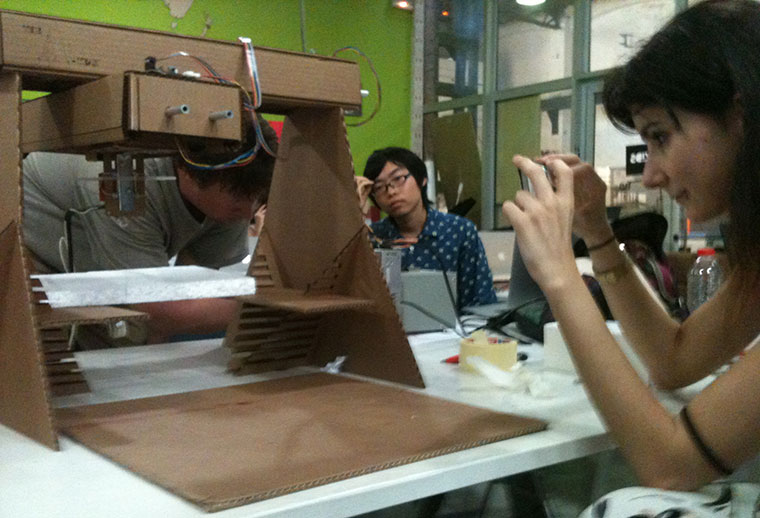
an A-team project.
Starting from the Jani's idea to develop an hot wire cutting machine the Ateam understood that something more was possible.
Time fighting: the A-team organization
While I was customizing the cardboard structure of Nadia's machine, Thaichi was developing the python software to generate the G code, Jani was already milling his customize PCB and Mery was design the tools support looking for material , reference and better technical solution to cut. In that fighting against the time we naturally find our rules and reciprocal way to work. Jani has electronics production master, Thaichi has code master, Mary to user design and me to structure design. Has well as we found our specialty we were constantly giving feedback one to the other Me adapting the structure to Mary's multy-tools evolution idea. Jani 3d printing the tool support and Thaichi adapting the code adding stop control to aloud the changing tool pit stop . I'm really proud to had been part of that amazing team.
Cardboard rules
We first investigate the limits of make a machine in cardboard.
Load resistance
Equilibrium
temperature resistance
the idea to use the 7mm cardboard stored in the Lab results not so good. Even adapting the design by using the parametric model of Nadia. Some pieces of the structure had been cutted off in final cutting file in order to reduce frictions and some others lines engraved to easily folding . I'm not convinced that even using cardboard with higher thickness than prevented the final results is more resistant. But the only way to verify that should be make several machines with differences cardboard and check the differences.
Multi-tool machine
We found several tool compatible with the same “dinamic”. In witch the most logistically complex is the hot wire. First of all for the heating system that didn't aloud us to use cardboard wood, or metacrylatos tool to support it. After some days designing tool we just realized that there was no way to make the hot wire cutting tool in the Fablab, of course in such few time. So we choose to buy one.
Machine's working area and equilibrium
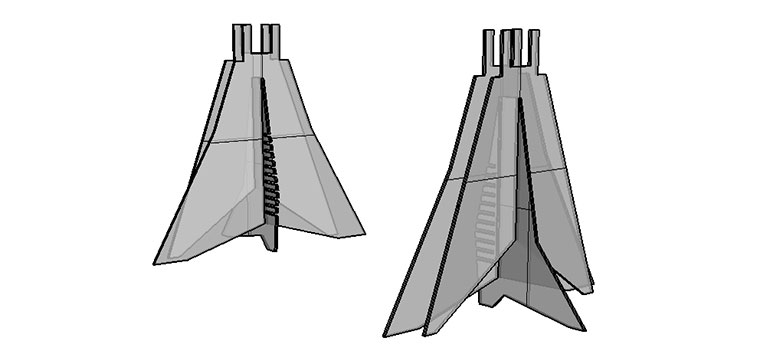
To stand the tool weight and help the equilibrium we choose to put the machine “looking down” and build a leg structure. Afraid a bout tension of the wire , resistance of foam, and motor weight I duplicate the legs structure and add a traversal element to make legs work together and at same time stand a base to suspend the foam while cutting.
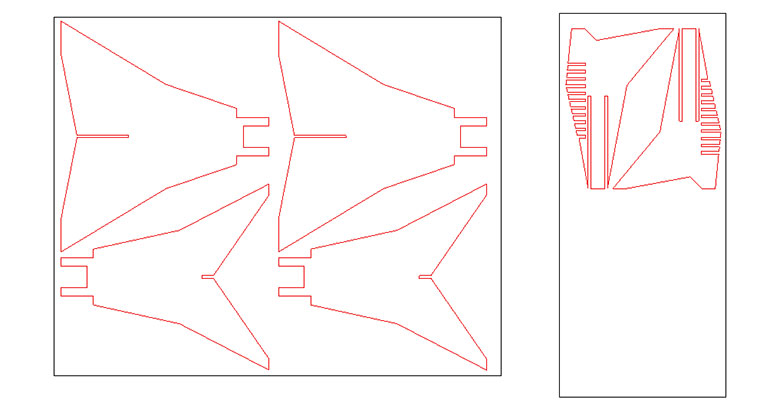
The result was not has stable as aspect . But was enough to make the first test using pen and paper.

Exited by those first result the Ateam understood the hot wire was not enough. So we designed a multi-tool that by using magnet permit easy changing tool from pen to hot wire passing by any kind of brush or everything anyone likes (for 2D face down use). Than Jani 3D printed it !
To make the machine compatible with as much as possible tools Taichi had to adjust the code. First of all to add an END-confirming procedure. In order to avoid that, coming back Home position, the tool should pass on the top ( or cut ) the work just done. Than interface controlling speed to adapt to each tool.
Machine's working area and equilibrium. part2
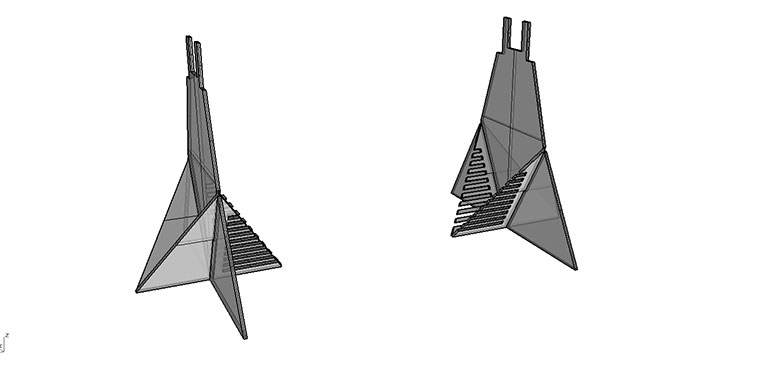
By the way Mery and me were design a new version of leg for the machine, Basically inverting the previous system. I mean using 2 traversal supports of each single leg. I try to adapt the design to minimize the waste material. Modifying the existing leg and cutting just small new peaces.
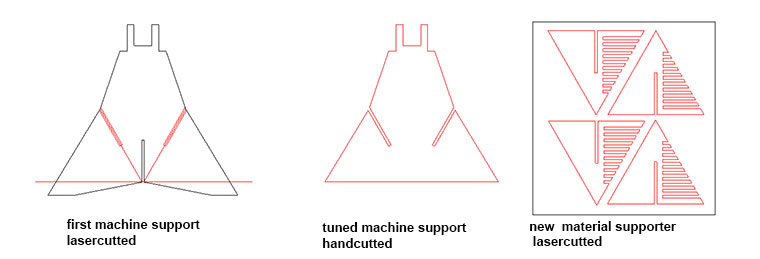
The machine resulting is much more stable , and can stand a foam without any base passing trough
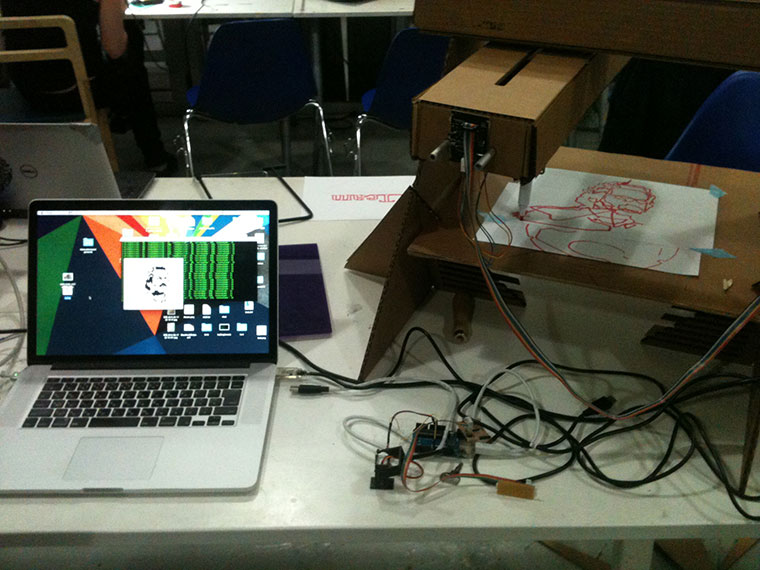
Multy-tool troubleshotting
In the mean time we were waiting a MAKERBOT available to 3d print the multy tool support. The magnet choose was working good with pen and light tool but was not enough for the hot wire tool support so we add some safety screws.
Jani finally assembled the hot wire tool. The first test was almost getting fire due to the hight temperature off course and the wrong tape protecting cover. But at the second test was already working good.